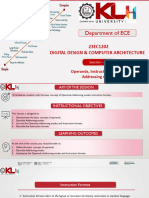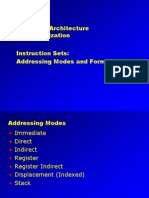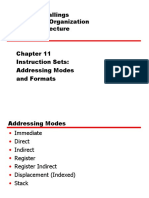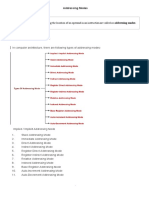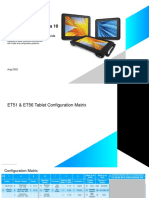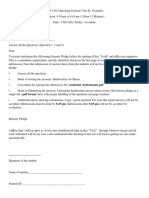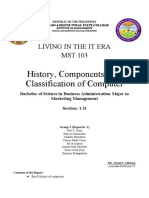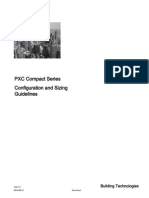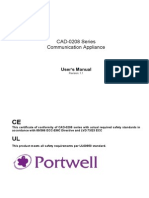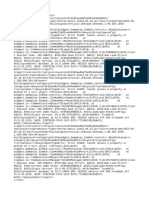0% found this document useful (0 votes)
82 views26 pagesLecture 9a - Addressing Modes
The document discusses various addressing modes in computer architecture, which determine how a computer locates data needed for instruction execution. It outlines different types of addressing modes, including immediate, direct, indirect, register, register indirect, displacement (indexed), relative, and stack addressing, along with their algorithms, advantages, and disadvantages. The information serves as a guide for understanding how data is accessed and manipulated within a computer system.
Uploaded by
aidaraihanahCopyright
© © All Rights Reserved
We take content rights seriously. If you suspect this is your content, claim it here.
Available Formats
Download as PPTX, PDF, TXT or read online on Scribd
0% found this document useful (0 votes)
82 views26 pagesLecture 9a - Addressing Modes
The document discusses various addressing modes in computer architecture, which determine how a computer locates data needed for instruction execution. It outlines different types of addressing modes, including immediate, direct, indirect, register, register indirect, displacement (indexed), relative, and stack addressing, along with their algorithms, advantages, and disadvantages. The information serves as a guide for understanding how data is accessed and manipulated within a computer system.
Uploaded by
aidaraihanahCopyright
© © All Rights Reserved
We take content rights seriously. If you suspect this is your content, claim it here.
Available Formats
Download as PPTX, PDF, TXT or read online on Scribd
/ 26




